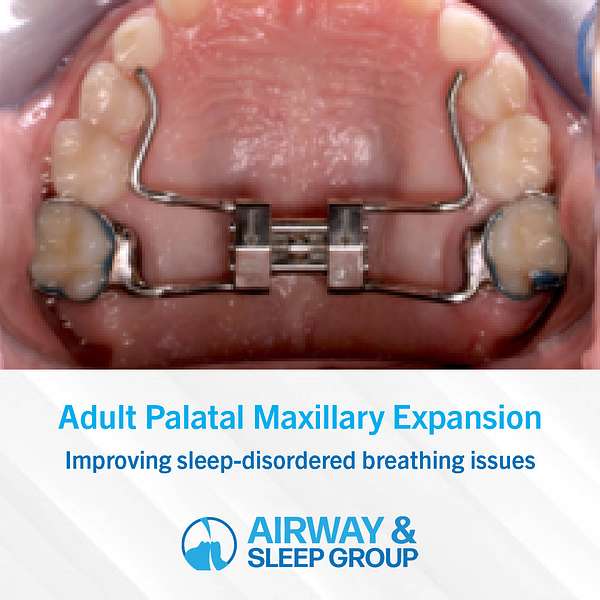
Airway and Sleep Group Podcast
Airway and Sleep Group Podcast
Adult Palatal Maxillary Expansion
When the jaw is too narrow, your doctor or dental professional may suggest a palatal or maxillary expansion. This widens the jaw to make room for teeth in younger patients, to correct or improve the way the upper and lower jaws work together, and improve breathing. It can also broaden your smile.
Maxillary Expansion in Adults
Two types of palatal maxillary expansion techniques are generally used in adults: the MSE Expander non-surgical device (best for ages 17-35) and surgically-assisted maxillary expansion (SAME).
MSE Expander: With the non-surgical expander, a fixed orthodontic appliance is attached to the back molars, crossing over the upper arch. It applies a gentle force to push against the teeth and expand the palate and the jaw.
SAME: Because the bones are already developed in an older patient, SAME is used when appliance expanders are unable to do the job on their own, or for moderate or severe cases. In this instance, the doctors makes small cuts along the jaw to create symmetrical segments that can be broadened or adjusted over time.
SAME is both safe and effective, and performed under general anesthetic. Following surgery and recovery, the treatment can take several months to a year to achieve the desired result, with incremental adjustments to expand the palate.
Some minor discomfort may occur in the first few days as your body adjusts to the expansion pressure. You may even see spaces appearing between your front teeth over time as the bones separate. Once the expansion is complete, orthodontic treatments can close the gaps between your teeth. Good stability is expected in the long term, with no significant relapse.
Why Would I Need Palatal Maxillary Expansion?
At Airway & Sleep Group, we are most concerned with your ability to breathe and sleep properly. The palatal maxillary expansion procedure is often used to resolve issues related to obstructive sleep apnea (OSA) or temporomandibular joint dysfunction (TMD), or to open airways and the nasal cavity to improve breathing. Other reasons for its use can include modifications for crooked or crowded teeth, or a crossbite.
A narrow bone structure in the face could be causing OSA or TMD. We may suggest a sleep study to study the amount of air flow during sleep, and how much carbon dioxide is in the blood. We’ll also monitor for sleep interruptions and things like brain activity and heart rate. If we discover that poorly-aligned teeth or a small jaw are the cause, we may recommend a maxillary expansion to solve breathing issues.
Sleep Apnea and Adult Palatal Maxillary Expansion at Airway & Sleep Group
At Airway & Sleep Group, we help improve sleep-disordered breathing issues through a number of treatment techniques, including adult palatal maxillary expansion. If you are suffering from sleep apnea, come talk to us.
Airway & Sleep Group is conveniently located in Reston, Virginia to serve patients throughout Northern Virginia and the Washington D.C. metropolitan region. Contact us to schedule an appointment at 571-244-7329, or use our convenient online form.